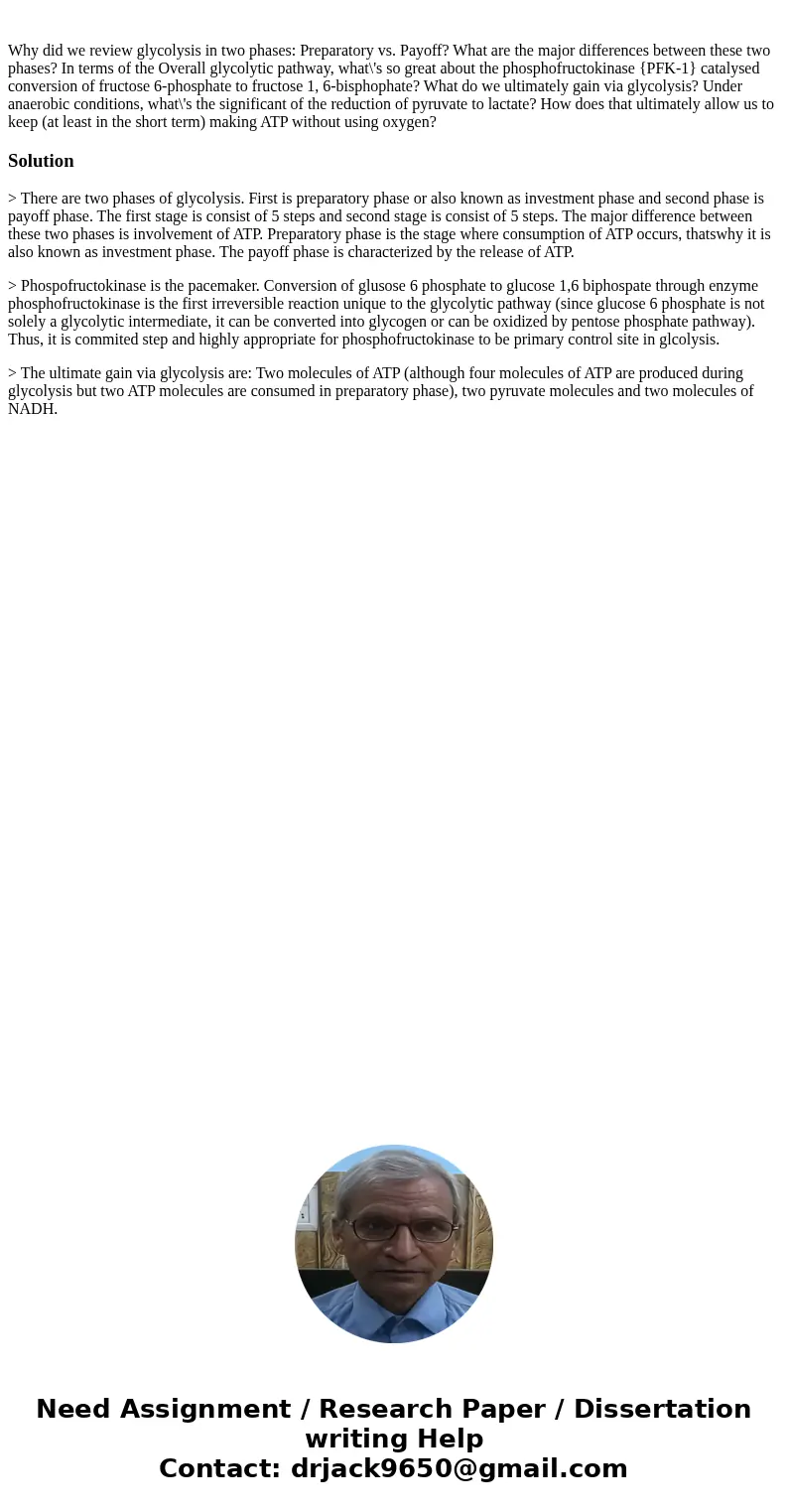Why did we review glycolysis in two phases Preparatory vs Pa
Solution
> There are two phases of glycolysis. First is preparatory phase or also known as investment phase and second phase is payoff phase. The first stage is consist of 5 steps and second stage is consist of 5 steps. The major difference between these two phases is involvement of ATP. Preparatory phase is the stage where consumption of ATP occurs, thatswhy it is also known as investment phase. The payoff phase is characterized by the release of ATP.
> Phospofructokinase is the pacemaker. Conversion of glusose 6 phosphate to glucose 1,6 biphospate through enzyme phosphofructokinase is the first irreversible reaction unique to the glycolytic pathway (since glucose 6 phosphate is not solely a glycolytic intermediate, it can be converted into glycogen or can be oxidized by pentose phosphate pathway). Thus, it is commited step and highly appropriate for phosphofructokinase to be primary control site in glcolysis.
> The ultimate gain via glycolysis are: Two molecules of ATP (although four molecules of ATP are produced during glycolysis but two ATP molecules are consumed in preparatory phase), two pyruvate molecules and two molecules of NADH.

 Homework Sourse
Homework Sourse